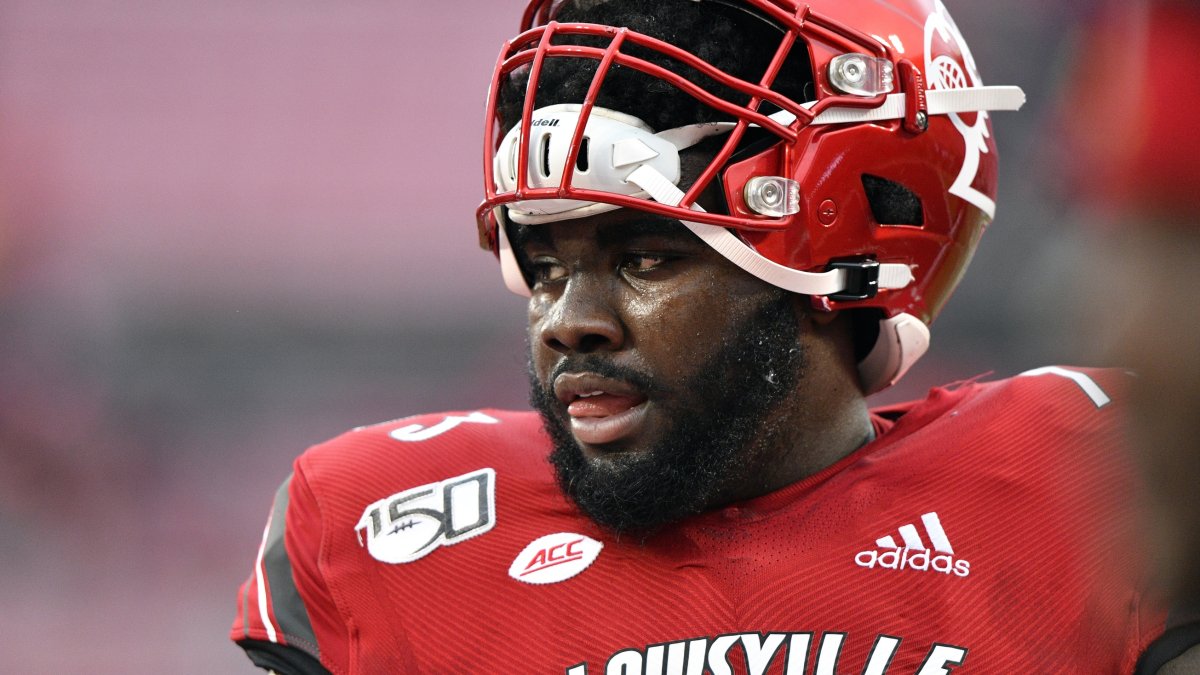There is something captivating about someone who weighs 364 pounds and can run 40 yards in 5.1 seconds. Men as large as Louisville offensive tackle Mekhi Becton are not supposed to move that well. PFF’s Mike Renner speaks to the elite physical tools that Becton has in the PFF Draft Guide, saying he is “the largest offensive tackle in the draft class, but he doesn’t move like it” and that “he heaves grown men who are actively trying not to be heaved.” That kind of physical potential is the stuff NFL front offices fall in love with, and it has Becton near the top of nearly every media big board out there.
[Editor’s Note: PFF’s new college-to-pro projection system is powered by AWS machine learning capabilities.]
ESPN’s Mel Kiper has Becton as the top offensive tackle and the seventh overall prospect on his latest big board; NFL Network’s Daniel Jeremiah also has Becton as the first tackle on his big board, coming in at seventh overall; Bleacher Report’s Matt Miller is a little lower on Becton, but he still has him as OT3 and the 16th-ranked prospect overall. Nearly everywhere you look across the industry, Becton is a top-20 prospect in this class — except here at PFF.
On the latest edition of the PFF Big Board, Becton comes in as the fifth-ranked offensive tackle (behind Andrew Thomas, Jedrick Wills, Tristan Wirfs and Josh Jones) and just the 47th-best prospect in the class overall. Becton's physical tools make his upside immense, but there is reason to be hesitant taking him with a top-10 pick given what we have on tape (or rather, what we don’t have on tape) from his three years at Louisville.
Becton hasn’t been tested like the other top tackles in the class
Back in January, we looked at true pass sets and their importance to player evaluation. Not all pass protection snaps are created equally. There are different circumstances and offensive schemes that make life easier or more difficult for offensive linemen to keep their quarterback off the ground, so simply looking at pass protection numbers as a whole can be misleading. What we found was that when evaluating pass blockers, a good rule of thumb is to look at plays:
-
- Without play action
- Without a screen
- Without a rollout
- With a time to throw between two and four seconds
- With more than a three-man rush
Exclusive content for premium subscribers

WANT TO KEEP READING?
Dominate Fantasy Football & Betting with AI-Powered Data & Tools Trusted By All 32 Teams
Already have a subscription? Log in



 © 2025 PFF - all rights reserved.
© 2025 PFF - all rights reserved.